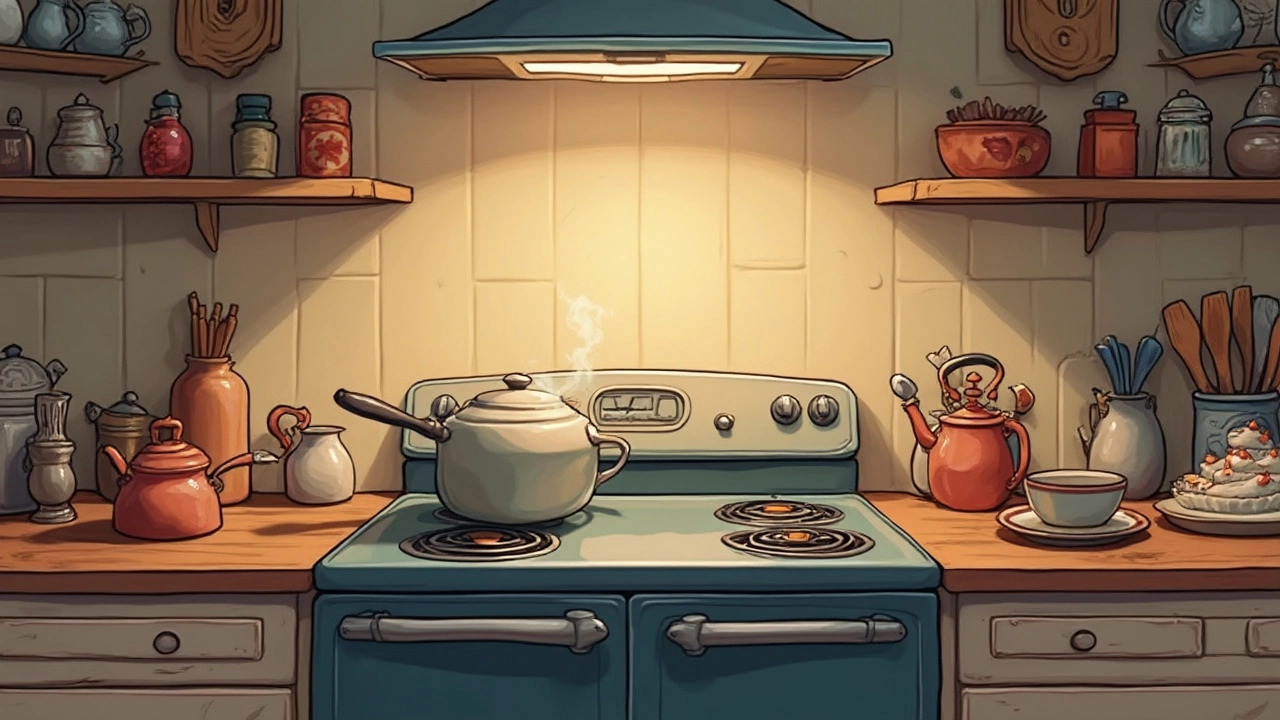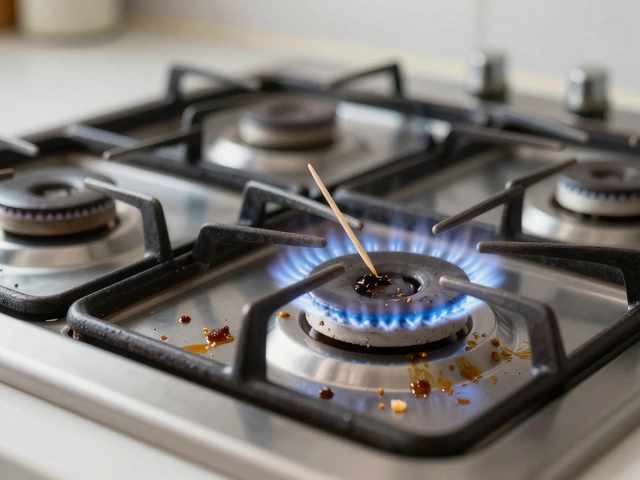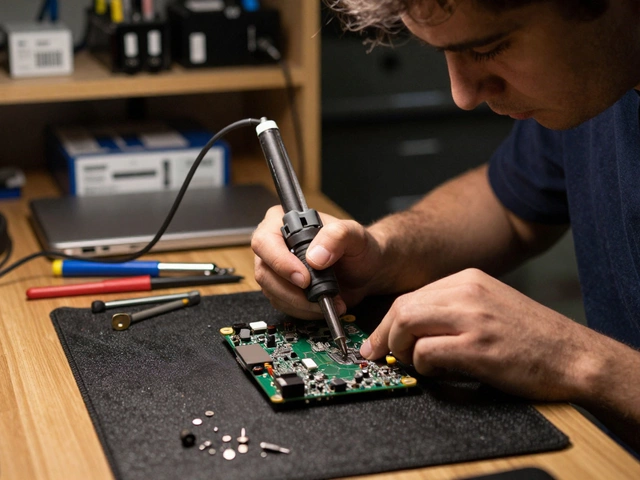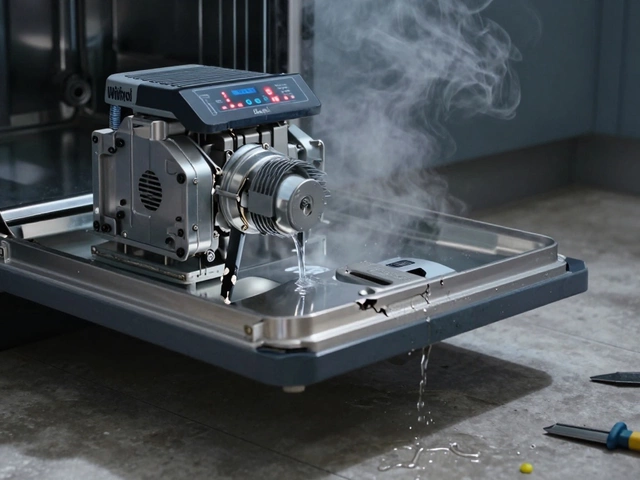Ever find yourself standing in the kitchen, wondering if your electric stove element is on the fritz? You're not alone. Many folks grapple with this question, often when their dinner isn’t cooking quite right. But don’t worry, just knowing the symptoms can save you from a lot of frustration—not to mention half-cooked meals.
The first thing to look out for is uneven cooking. If one side of your dish heats up nicely while the other side stays cold, your element might be to blame. Another telltale sign is visual: check for any physical damage like blisters or breaks on the coil.
Believe it or not, strange noises are a big red flag, too. Hissing, buzzing, or popping sounds are not normal and should prompt a closer inspection. A simple way to test: swap the suspect element with another that you know works… if the problem follows the element, you’ve found your culprit!
- Recognizing the Symptoms
- Common Causes of Failure
- Simple Troubleshooting Techniques
- Safety Precautions
- When to Call a Professional
- Maintenance Tips
Recognizing the Symptoms
If your electric stove isn't working like it used to, you might have a faulty element on your hands. But before you panic, let’s break down what to look for.
First off, if you notice one part of your dish is cooking faster than the other—not the chef’s fault! Your stove could be the issue. Make sure to check if the cooking. surface feels warm and the element is glowing steadily when turned on. If not, consider it a red flag.
Have you heard any odd noises lately? Strange hissing, buzzing, or even popping sounds may indicate the element is wearing out. These noises, combined with flickering lights or short cycling, should definitely grab your attention.
Visible damage is another giveaway. Look for blisters, burns, or breaks on the coil. It might be tempting to ignore these, but trust me—doing so could lead to more headaches, like uneven heating or worse—no heating at all!
Sometimes, simply comparing performance across different burners can be telling. Swap the suspect element with another. If the problem moves with the element, it’s a solid clue you’ve identified the issue.
If you're into numbers, one good test involves a multimeter. You can check the continuity of your element using this handy tool. A functional element should show a range between 19 and 115 ohms. If it reads outside this range, it might be time to replace it.
- Uneven cooking
- Strange noises like hissing or popping
- Visible damage on the coil
- Element doesn’t glow evenly
- Tested resistance out of normal range
These signs aren’t just nuisances—they signal the need for some attention. So, keep an eye out, listen up, and don’t ignore these symptoms if you want your stove back in tip-top shape.
Common Causes of Failure
So, what's causing your electric stove element to act up? It's not usually a mystery once you know what to look for. Usually, it boils down to a few common culprits.
One major reason is simply wear and tear. Let's face it, your stove takes a beating over the years. Elements can naturally degrade with consistent use, especially if you cook often. The more you rely on them, the quicker they might wear out.
"The life expectancy of an electric stove element can range from 10 to 15 years, depending heavily on frequency of use and maintenance," notes Sam Waters, appliance expert at HomeFix Inc.
Another possible cause is electrical issues, like loose connections. If the plug isn't snuggly fitted, the element might not heat correctly or at all. It’s a small thing that can make a big difference!
Sometimes, the voltage itself can be an issue. If your home’s electrical system is delivering inconsistent power, it could impact the stove element’s performance. Check to ensure your outlet is compatible with the stove’s requirements—this is something a professional electrician can help with.
- Poor fit or improper installation
- Manufacturer defects, though these are rare
- Liquid spills leading to short circuits
The good news is, understanding these common causes gives you a head start in diagnosing the problem. Being proactive about cleaning spills right away and ensuring proper installation can extend your stove's life. Prevention is key!
Simple Troubleshooting Techniques
So, your electric stove isn’t cooperating? Before you call in the pros, let’s walk through some basic troubleshooting steps that might just save the day (and keep your wallet happy too!).
First off, make sure your stove is unplugged or the circuit breaker is off. Safety first, always! Once that’s done, we can dig into the nitty-gritty.
- Visual Inspection: Check the element for any obvious signs of wear and tear. Look for blisters, cracks, or any discoloration. These are often the first signs of a faulty element.
- Element Swap Test: If one of your stove’s elements isn’t working, try switching it with another one that’s functioning properly. If the problem persists with the swapped element, it’s clear you’ve got a faulty element on your hands.
- Connection Check: Sometimes, loose connections can be the culprit. Carefully remove the element and ensure that its terminals are snugly connected to the stove. A loose or corroded connection might be causing the issue.
- Test with a Multimeter: This is a bit technical, but knowing your element’s conductivity can really pinpoint issues. Set the multimeter to the ohms setting and check the element’s resistance. Typically, a functioning element will have a low resistance reading. If it’s off the charts or non-existent, time for a replacement.
These steps often help to identify the issue. However, if you’re still scratching your head, it might be time to call in a professional. Remember, electricity isn’t something to gamble with, so if in doubt, always get expert help.
Here's a quick overview:
| Symptom | Possible Cause |
|---|---|
| No heat | Check connection and resistance |
| Uneven heat | Element swap |
| Sparking | Visual inspection |
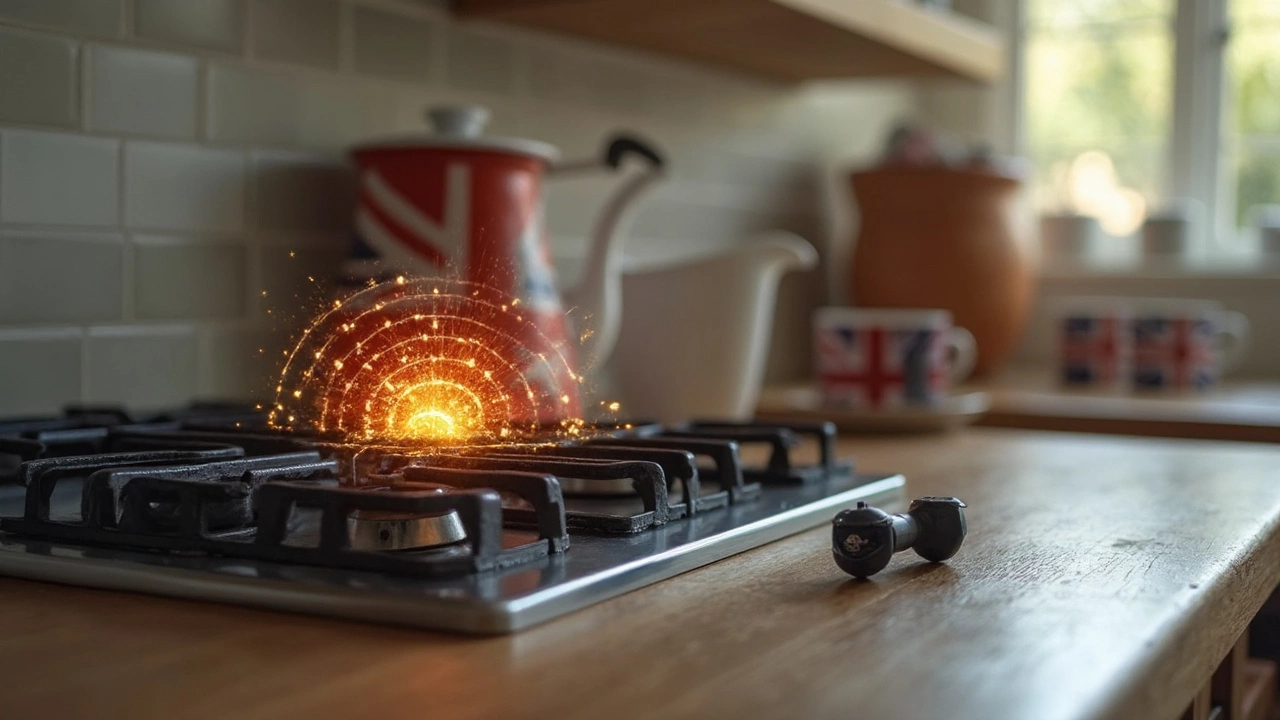
Safety Precautions
Before you even think about tinkering with your electric stove, there are a few safety precautions you need to consider. Trust me, these steps are crucial in keeping you from an unwanted zap or even a house fire.
First and foremost, always unplug the stove or switch off the circuit breaker before you start any inspection or repair. Electricity and curiosity never mix well! Ensuring the power is off can really save you big time.
Another important tip: wait until the stove is completely cool. It's easy to get impatient, but those elements can stay hot long after you've turned them off. Give it time—better safe than sorry.
Always use tools with insulated handles. These are specially designed to protect you from accidental electric shock. They’re a small investment that brings a lot of peace of mind.
- Unplug or turn off the circuit breaker.
- Wait for the stove to cool down.
- Use insulated hand tools.
- Wear safety gloves to protect it.
If you're dealing with a faulty element, the general rule is: if you're not sure, call a pro. It's tempting to DIY, but sometimes the risk isn't worth it. A professional can resolve issues safely and verify that your appliance is in good working order.
When to Call a Professional
So, when exactly should you dial up a professional to tackle your electric stove issues? Well, sometimes even seasoned DIYers need to call in backup, especially when safety is on the line or when the problem's just too tricky to handle solo.
First up, if there's a persistent electrical issue that you can't nail down, it's time to get an expert involved. Remember, playing with electricity without the know-how is not just risky—it can be downright dangerous. If you notice consistent circuit tripping or if repairing one element results in issues cropping up elsewhere, you should definitely let the pros handle it.
Unusual smells, especially those that remind you of burnt wiring or plastic, are solid signals to halt your DIY attempt and bring in a technician. These odors could indicate something more serious under the hood of your appliance or even the risk of an electrical fire.
- Burning smells or melted parts
- Repeated circuit breaker trips
- Severe physical damage to the element
- Unresponsive control knobs
Another crucial time to call in professionals is when your electric stove shows errors or issues after a storm or power surge. These events could cause voltage spikes, affecting internal components that are better left to an experienced pair of hands.
If you're unsure, it's always safer to get a consultation, even if there's a minor fee involved. Peace of mind? Totally worth the cost.
Maintenance Tips
Keeping your electric stove in top shape isn’t rocket science. A bit of regular care goes a long way in preventing issues down the line. Let's lay out some practical steps to keep those elements kicking.
First off, it's crucial to clean your stove regularly. Food spills and grime can build up over time, which isn’t just gross—it can be a fire hazard. Here’s a quick routine:
- After cooking, once the stove is completely cool, wipe down the surface with a damp cloth.
- Use a gentle cleanser for more stubborn spots—baking soda and vinegar make a great homemade solution.
- Avoid soaking the elements in water, as this can lead to damage.
Next, always check for loose connections. Every few months, inspect the prongs that connect the element to the stove. Loose or corroded connections can cause your stove to malfunction, so give them a regular check-up.
Here’s a fun fact: Did you know that keeping the vents clear can improve efficiency by up to 20%? Tidy up the space around your stove to ensure proper ventilation—it can actually save you a bit on the energy bill!
Lastly, consider having a professional look over your stove once a year. This isn’t just for when things go haywire. A pro can catch issues early and help your stove repair itself before you even notice a problem.
By taking these simple steps, you’ll extend the life of your stove and keep your cooking game strong. Remember, a little maintenance now saves a lot of headaches later.
